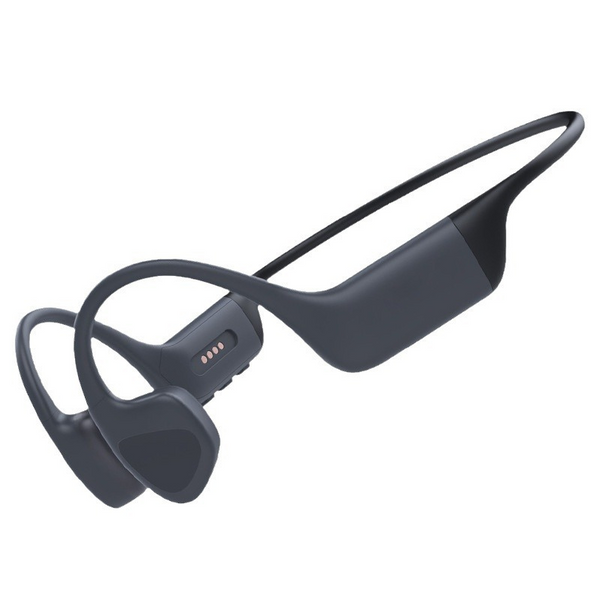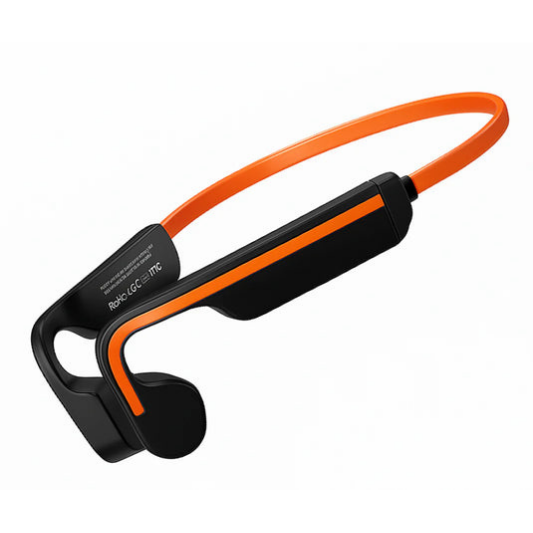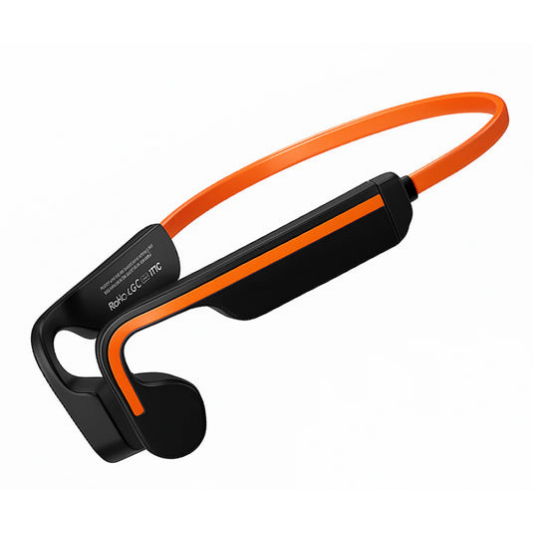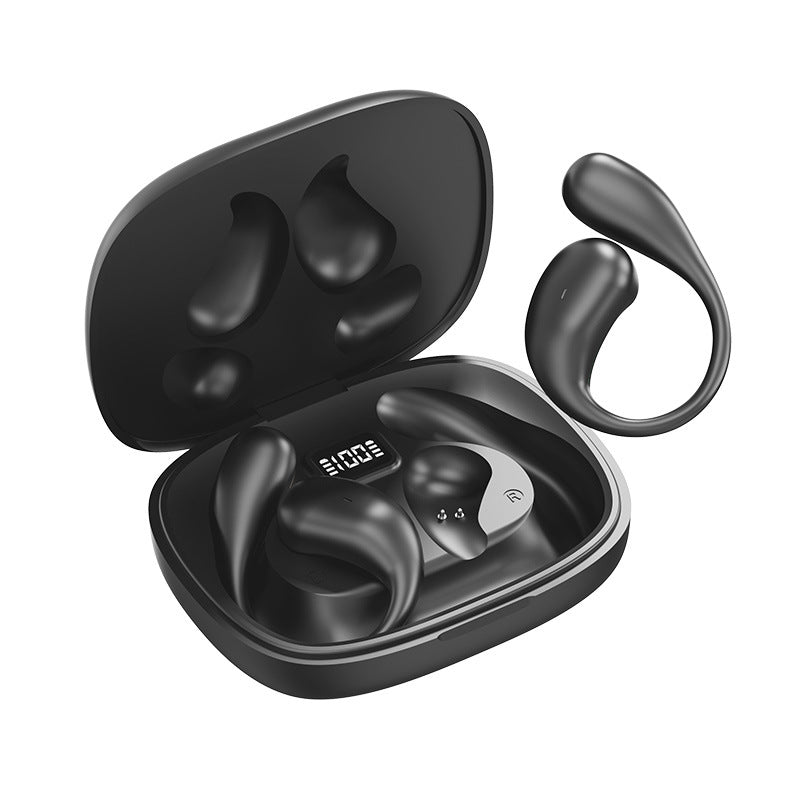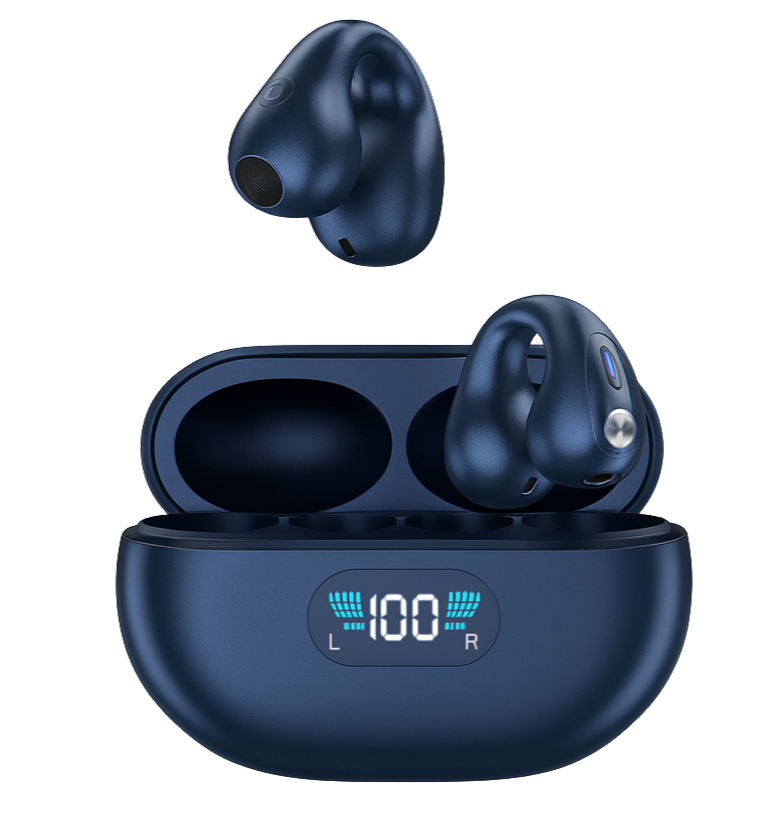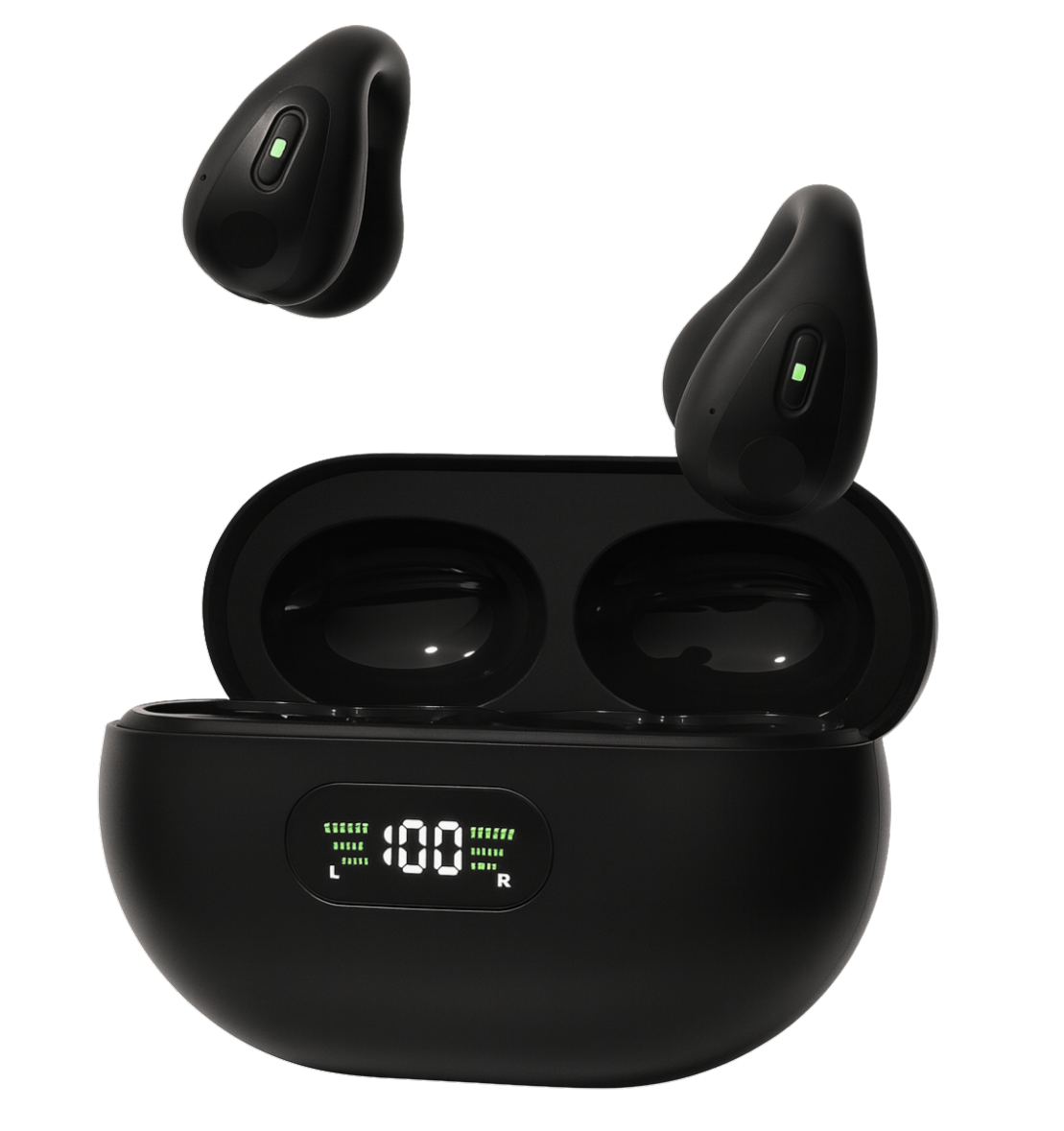Bone conduction headphones have revolutionized the way we listen to music. By transmitting sound through the bones of the skull rather than the ear canal, they provide an open, comfortable, and safe listening experience. This innovative technology particularly appeals to people concerned about preserving their hearing health. But one question often arises: can bone conduction headphones actually reduce the risk of tinnitus?
Through sound trauma prevention, eardrum protection, and overall comfort, this article explores the link between bone conduction and hearing protection to understand whether these headphones can truly help reduce tinnitus.
Can Bone Conduction Headphones Really Reduce the Risk of Tinnitus?
Yes, bone conduction headphones can indeed help reduce the risk of tinnitus — provided they are used properly and at a reasonable volume.
Their technology is based on a simple principle: transmitting sound through bone vibrations rather than through the air — meaning they bypass the eardrum entirely. This unique function helps protect part of the traditional hearing system and therefore reduces risks linked to excessive noise exposure, the main cause of tinnitus.
Sound Transmission That Bypasses the Eardrum
Unlike traditional earphones that send sound waves directly into the ear canal, bone conduction headphones vibrate the bones of the skull (usually the temples or cheekbones). These vibrations then reach the cochlea — the sensory organ in the inner ear — which converts the mechanical signal into electrical impulses sent to the brain.
This method bypasses both the eardrum and middle ear — areas particularly sensitive to sound trauma. By reducing direct stimulation of the eardrum, these headphones lower the risk of hearing damage and thus the likelihood of developing tinnitus related to long-term noise exposure.
For people with auditory sensitivity or partial hearing loss, this technology can offer a gentler and safer listening alternative.
Reduced Risk, But Not Absolute Protection
However, it’s important to note that bone conduction headphones don’t eliminate the risk of tinnitus entirely. Damage can also occur in the cochlea due to overstimulation.
If the volume is too high, even bone conduction vibrations can cause auditory fatigue or neural overload similar to that caused by regular earphones. In other words, excessive sound intensity can still damage the inner ear and lead to ringing or buzzing sensations.
That’s why it’s best to listen at a moderate volume and avoid long listening sessions. Bone conduction reduces the risk, but it doesn’t replace good hearing habits.
Safer Listening Through Environmental Awareness
One of the major benefits of bone conduction headphones is their open-ear listening experience. Because your ears remain uncovered, you can still hear surrounding sounds — like traffic, voices, or safety signals.
This reduces the need to raise the volume to overcome isolation, a common reflex with traditional earphones.
This feature is especially valuable for active users — cyclists, runners, or outdoor workers — who want to enjoy music while staying alert. By avoiding unnecessary volume increases, bone conduction headphones indirectly help prevent tinnitus.
Modern models, like those from ImaxSound, integrate high-precision transducers that deliver clear audio even at low volume. The result: a comfortable listening experience without needing to crank up the sound, and thus reduced auditory exposure.
A Helpful Option for Those Already Experiencing Tinnitus
For people already suffering from tinnitus, bone conduction headphones can provide a comfortable solution. Since they don’t stimulate the ear canal directly, users can listen to music or take calls without worsening their symptoms.
Some users even report a sense of relief, especially at low listening levels. The gentle and stable sound delivered through bone conduction can help divert attention from internal noises without aggravating the condition.
However, those with severe tinnitus should always consult an ENT specialist before use to ensure that this listening method is appropriate for their specific condition.
Limitations to Keep in Mind
Even though bone conduction reduces risks, it doesn’t replace proper hearing protection in loud environments.
If you’re regularly exposed to high sound levels (concerts, construction sites, nightclubs), using earplugs remains essential for preserving your hearing.
Also, some users may feel a slight vibration on their temples at high volume. While harmless, it serves as a reminder that listening comfort always comes first.
Other Health Benefits of Bone Conduction Headphones
Bone conduction headphones not only offer an innovative listening experience — they also come with significant health benefits.
By transmitting sound through the bones rather than the ear canal, they limit overexposure to loud sounds, reduce auditory fatigue, and improve overall comfort. These advantages make them a great option for athletes, hygiene-conscious individuals, or anyone who wants to protect their hearing without sacrificing sound quality.
Preserving Long-Term Hearing Health
Their main health advantage lies in hearing preservation. By bypassing the eardrum, bone conduction headphones significantly reduce acoustic pressure on the middle ear. Unlike traditional earbuds that send sound directly into the ear canal, bone conduction uses gentler mechanical vibrations.
This helps prevent hearing damage caused by loud volumes or prolonged use — two major causes of tinnitus and early hearing loss.
Models from ImaxSound deliver clear and detailed sound even at low volumes, allowing users to enjoy music comfortably without overexposure.
Reducing Auditory Fatigue and Headaches
Prolonged sound exposure can lead to auditory fatigue or headaches. Since bone conduction uses vibrations instead of direct sound pressure, it minimizes these effects.
Vibrations are naturally absorbed by the skull, avoiding the discomfort often caused by in-ear headphones after several hours.
This makes them perfect for people who wear their headphones for long periods — remote workers, students, drivers, or athletes. The sound remains clear and balanced without the feeling of “plugged ears” or buzzing.
Moreover, because the ear canal remains open, the brain receives a balanced mix of headphone sound and ambient noise, reducing sound-related stress.
Improved Safety During Outdoor Activities
Another key benefit concerns safety. Bone conduction headphones keep your ears open, letting you stay aware of your surroundings — like traffic, conversations, and warning signals — while still enjoying your music.
This dual awareness reduces the risk of accidents, making them ideal for urban users and athletes who need both focus and alertness.
ImaxSound, for example, designs waterproof, sweat-resistant models perfect for sports use — combining stability, durability, and complete auditory freedom.
Reduced Risk of Infections and Irritation
Bone conduction headphones are also more hygienic. Since they don’t sit inside the ear canal, they prevent earwax buildup, sweat retention, and bacterial growth — common with in-ear headphones.
This makes them particularly useful for people prone to ear infections, irritation, or recurring otitis. The limited contact with skin provides a cleaner, more comfortable experience — especially during sports or in hot conditions.
Suitable for People with Hearing Disorders
Bone conduction headphones can even assist those with certain types of hearing loss, such as conductive hearing loss (caused by damage to the eardrum or middle ear).
By sending vibrations directly to the cochlea, they allow users to perceive sound without relying on the damaged parts of their hearing system.
This makes bone conduction an accessible and discreet alternative to traditional hearing aids, offering music and call functionality without compromising natural hearing.
A More Natural and Balanced Listening Experience
Finally, bone conduction headphones provide a more natural listening experience.
By keeping you connected to your surroundings, they prevent the isolating feeling typical of closed-back headphones.
This open listening improves concentration, reduces mental fatigue, and promotes overall well-being.
Users often report better spatial sound perception, making listening more enjoyable and less invasive. This technology enhances not just auditory health but also psychological comfort.
How to Use Bone Conduction Headphones Safely
To fully benefit from bone conduction technology while protecting your hearing, it’s essential to use them correctly. Even though they’re safer than traditional earphones, misuse can reduce their effectiveness.
-
Keep the volume moderate: Bone vibrations don’t need to be loud to be heard clearly. High volume can still fatigue the cochlea and cause auditory stress. Ideally, keep it below 70% of the maximum level.
-
Position the transducers properly: Place them on your cheekbones, just in front of the ears, for optimal transmission and comfort.
-
Take regular breaks: Even with bone conduction, short breaks (about 10 minutes every 2 hours) help your ears recover.
-
Choose ergonomic, certified models — like those from ImaxSound — which use lightweight materials, controlled vibrations, and balanced audio quality.
By following these steps, you can enjoy a safe, natural, and healthy listening experience every day.
FAQ: Bone Conduction Headphones and Tinnitus
Can bone conduction headphones really reduce tinnitus?
Yes. They help reduce the risk of tinnitus by transmitting sound through the bones instead of the eardrum, limiting direct exposure to loud sounds — a primary cause of noise-induced tinnitus.
Are they safe for people who already have tinnitus?
Usually yes. Since they don’t stimulate the ear canal, they can often be used without worsening symptoms. Still, consult an ENT specialist first if you have chronic tinnitus or hearing loss.
Can bone conduction headphones cure tinnitus?
No, they can’t cure it. But they can make listening more comfortable by delivering gentle, open sound that doesn’t irritate the auditory system.
Does volume affect tinnitus risk with bone conduction?
Yes. Even with bone conduction, excessive volume can still harm the cochlea. Always keep a moderate volume and limit listening duration.
Why is bone conduction gentler on the ears?
Because it bypasses the eardrum. Sound goes directly to the inner ear through skull vibrations, reducing pressure on fragile ear structures.
Are they suitable for people with hyperacusis (sound sensitivity)?
In many cases, yes. Bone-conducted sound is more stable and less aggressive than air-conducted sound, but medical advice is still recommended.
Can bone conduction headphones help mask tinnitus?
Yes. Many users listen to relaxing sounds or white noise to help shift focus away from ringing, especially in quiet environments.
